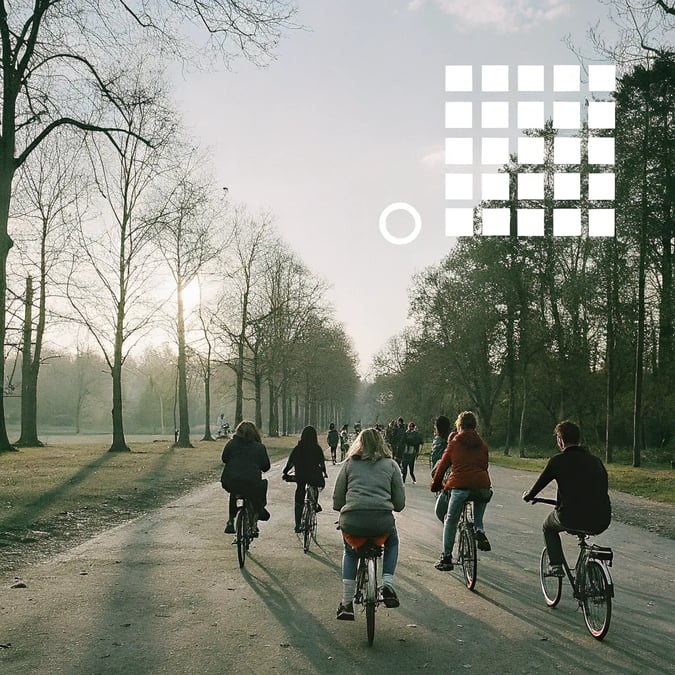
Getting into cycling can transform your health, mood, and daily routine—but like any new habit, it takes more than just enthusiasm to make it stick. Whether you're dusting off an old bike from the garage or investing in your first set of wheels, creating a sustainable cycling practice requires smart planning and the right mindset. I've compiled practical strategies to help you pedal your way to a lasting cycling habit.
Why Cycling Deserves a Place in Your Life
Cycling offers a remarkable combination of benefits that few other activities can match. Beyond the obvious cardiovascular workout, regular cycling strengthens your legs and core while being gentler on your joints than running. According to research published in the British Medical Journal, cycling commuters had a 41% lower risk of dying from all causes than people who drove or took public transport.
But the benefits extend beyond physical health. Many cyclists report improved mental clarity, reduced stress levels, and better sleep quality. Plus, there's the environmental impact—swapping car trips for bike rides reduces your carbon footprint significantly.
Setting Yourself Up for Success

Start With the Right Equipment
You don't need top-of-the-line gear to begin, but a few essentials will make your experience much more enjoyable:
- A properly fitted bike that suits your primary riding environment
- A helmet that meets safety standards
- Comfortable clothes that won't restrict movement
- A water bottle and cage for hydration
- Front and rear lights if you'll be riding at dawn, dusk, or night
"The biggest mistake new cyclists make is getting a bike that doesn't fit them properly," says Sarah Johnson, a cycling coach with 15 years of experience. "An uncomfortable bike is the fastest way to kill your motivation."
Start Small and Build Gradually
The enthusiasm of beginning a new fitness journey often leads to overdoing it—a common reason why new habits fail. Instead:
- Begin with short, manageable rides (15-20 minutes)
- Add 5-10 minutes to your rides each week
- Aim for consistency rather than intensity in the first month
"I tell my clients to focus on frequency first, then duration, and only later, intensity," explains cycling coach Marco Ramirez in a recent Bicycling magazine interview. "Three 20-minute rides a week builds a habit better than one exhausting 60-minute ride."
Making Your Cycling Habit Stick
Pair Cycling With Existing Routines
Habit stacking—attaching a new habit to an established one—dramatically increases your chances of success. For example:
- Ride your bike to work one day a week after your morning coffee
- Schedule a weekend ride right after breakfast
- Replace your evening social media scrolling with a sunset bike ride
According to BJ Fogg, behavior scientist at Stanford University, "The most effective way to establish a new habit is to find where it naturally fits into your existing routine." His research at the Stanford Longevity Center shows that habits anchored to existing behaviors have a much higher success rate.
Find Your Cycling Community
Riding alone has its merits, but connecting with other cyclists can provide accountability and make the experience more enjoyable. Consider:
- Joining a local cycling club or group
- Finding a cycling buddy with similar goals
- Participating in community rides
- Following cycling enthusiasts on social media for inspiration
The social aspect can be particularly motivating on days when your enthusiasm wanes. Research from the National Institute of Diabetes and Digestive and Kidney Diseases confirms that social support significantly increases adherence to new health habits.
How Do I Stay Motivated When Life Gets Busy?
This is perhaps the most common question among new cyclists. The key is building flexibility into your cycling plan from the beginning:
First, identify your non-negotiable minimum—perhaps it's two 20-minute rides per week. When life gets hectic, you maintain just this core commitment rather than abandoning cycling altogether.
Second, have indoor options ready. "Bad weather is the number one excuse I hear," says cycling instructor Tanya Morris. "Having a simple home trainer or access to spin classes eliminates this barrier."
Finally, track your progress. The HelpGuide.org wellness resources suggest that monitoring improvements—whether in distance, speed, or simply how you feel after rides—provides powerful motivation to continue.
Overcoming Common Obstacles
Even with the best intentions, challenges will arise. Recognizing potential obstacles in advance helps you prepare strategies to overcome them:
- Weather concerns: Invest in appropriate gear for various conditions or have indoor cycling options
- Safety worries: Take a cycling safety course, find protected bike paths, or join group rides
- Time constraints: Schedule rides in your calendar as non-negotiable appointments
- Physical discomfort: Get a professional bike fitting and gradually build endurance
Remember that lapses are normal when establishing any habit. Research from the NIH News in Health indicates that habit formation isn't linear—expect occasional setbacks and plan how you'll get back on track.
Final Thoughts
Creating a lasting cycling habit isn't about willpower or dramatic lifestyle overhauls. It's about thoughtful planning, starting small, and building gradually. By integrating cycling naturally into your existing routines and preparing for common obstacles, you'll be well on your way to making cycling a sustainable part of your healthier lifestyle.
Disclaimer: This article is for informational purposes only and is not intended to replace professional medical advice. Consult with your healthcare provider before beginning any new exercise program, especially if you have existing health conditions.
Tags

About Evelyn Grant the Author
Evelyn Grant is a trailblazer in the world of cycling fashion, known for combining functionality with style. With over a decade of experience, she designs apparel that meets the demands of avid cyclists while making a bold fashion statement.
Recommended Articles
4 Everyday Drinks Being Studied for Circulation Support
Explore 4 everyday drinks that may enhance circulation, including herbal teas, coffee, red wine, and beetroot juice. Discover their health benefits.
Why More Seniors Are Considering Compact Mobility Tech
Explore how compact mobility tech enhances independence and quality of life for seniors, making daily activities more accessible and enjoyable.
Why More Seniors Are Replacing Walkers With This Sleek Device
Discover why seniors are opting for sleek mobility devices over traditional walkers, enhancing their independence with style and functionality.
2025 Cadillac CT4 Combines Performance With Refined Luxury
Discover the 2025 Cadillac CT4, where thrilling performance meets luxury, featuring advanced safety, elegant interiors and powerful engine options.
2025 Lexus RX Keeps the Luxury SUV Crown With Smarter Features
The 2025 Lexus RX redefines luxury SUVs with advanced tech, safety features, and a focus on comfort for an unparalleled driving experience.




